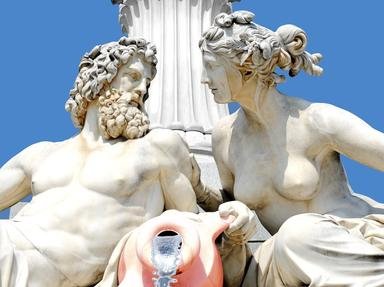Many ancient religions featured male fertility deities alongside the more prevalent female ones. Some of them were also sky or weather gods, identified with rain. This was particularly true in the Middle East, where droughts are a frequent occurrence. One such deity was the Canaanite rain god
, whose absence caused starvation, death and chaos. In Ancient Egypt, fertility was strongly connected to the annual floods of the Nile, which regenerated the land: both the ram-headed god
and the crocodile-headed god
were associated with the life-giving floods of the great river.
In classical Greece and Rome, fertility gods were unabashed icons of masculinity. A rather unpleasant medical condition was named after
because of this god's graphic depictions, while
, half-man, half-goat, was associated with sexuality, nature, and the spring season. In Ancient Rome, where virility was held in extremely high regard,
was revered as the god of male procreative power, as well as wine, revelry and freedom - as his name implies.
In Norse myth, fertility, love and sex were the preserve of the Vanir, in particular the god
, who was often depicted with phallic attributes. In both western and eastern Europe, fertility gods were often associated with powerful animals such as bulls, stags and stallions. Such is the case of
, the Celtic god of nature, animals and fertility, depicted with an antlered head. On the other hand, the Slavic fertility god
, associated with agricultural imagery and horses, represented the youthful life-force that causes vegetation to grow.
, the trickster god of fertility of the Hopi and other Native American cultures of the southwestern US, was usually portrayed as a flute-playing hunchback with a large phallus, like some of its European counterparts. The Aztec pantheon also included a number of gods with strong connections to fertility, such as
, the "Flower Prince", god of flowers, love and pleasure. Further south in the Americas, the Muisca of present-day Colombia honoured
, god of sports and fertility, with dances, games and sexual rites.
